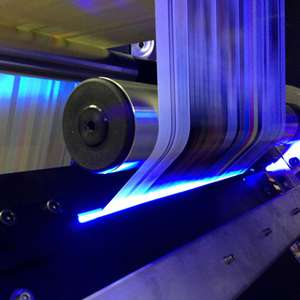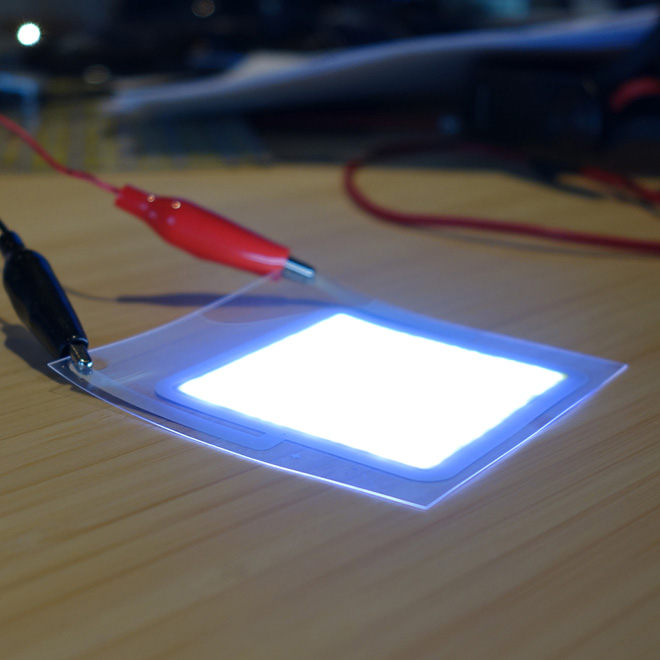

You can address the sections of the diodes, which is a whole other space when you start thinking about solutions of light that you can address sections of. Rohinni has developed a way to print paper-thin lighting in any shape and for any situation. The magical thing about this solution is it’s brighter, it’s thinner, it’s flexible, it’s addressable, and programmable. All we know is that we’re trying to unlock the ability to create light. Idaho-based company Rohinni has taken this idea to an extreme, creating LEDs the size of a blood cell, allowing light to be printed. CMO Nick Smoot of Rohinni said, “With Lightpaper it’s more of a platform of light that we don’t even know how it’s going to be used. The firm displayed the Lightpaper as a wallpaper, on car logos and even snowboards. The company says, “Today’s lighting methods require soldering LED to circuit boards – now you can just print light on what you want.” Rohinni, the firm behind Lightpaper, claims that their product is the thinnest light in the world that is flexible and is printed.

Lightpaper can also be used as a wallpaper that doubles as a source of light. Revealed by researchers at Idaho, this breakthrough has been made possible by 3D printing. It can also be printed on different objects, making light out of everything. LightPaper is made with a mixture of ink and extremely small LEDs applied to a conductive surface and then sealed between two other thin layers. It is paper-thin and can be used to print a light-up version of, well, just about anything. Lightpaper is billed as an innovative way to print lighting. Lightpaper units can also be used for logos. Emerging technology trends such as wearables, where curved or oddly shaped displays are needed, can benefit from using Lightpaper which can be printed in any shape. This small team of engineers developed the. Rohinni, an Idaho-based company is introducing the worlds thinnest LED lighting, the Lighpaper. At present Rohinni imagines the Lightpaper to be able to perform as a thinner LED light source for a number of consumer devices. A team of researchers has unveiled Lightpaper – an innovative way to print sheets of ‘paper’ that are infused with tiny LEDs.Īccording to the researchers, the Lightpaper can be applied to walls and other objects. Rohinni has invented an LED light product aptly named LightPaper. Rohinnis team introduced LightPaper, the worlds thinnest backlight, made of mini LEDs over seven years ago now. Either way, this is done to maximize the likelihood that an incident photon will excite one of the molecules in that region of the diode, thereby freeing up an electron and causing it to flow around the circuit.Introduction of technology that could turn any object in your home into a light could very well be the end for light bulbs. I don't know that the energy band gap is as important, though I'd imagine the narrower the better.

They attempt to maximize the size of their depletion region. Photodiodes (used for PV arrays) are similar, but optimized for a completely different goal. This causes the semiconductor to shed excess electrons as visible light energy. In short, LEDs are semi conductors optimized to have a very specific direct energy band gap which produces photons in the visible light spectrum. That is, that good photovoltaic sources would emit heaps of light when a current was applied.

So instead, I'll offer some (probably fallacious, but likely still correct in its conclusion) logical deduction - If this was likely to be a good photovoltaic source, the inverse would also likely be true. I just wrote a long diatribe attempting to explain why using my very limited knowledge of semiconductor physics, but realized I couldn't do so without making some substantial guesses.


 0 kommentar(er)
0 kommentar(er)
